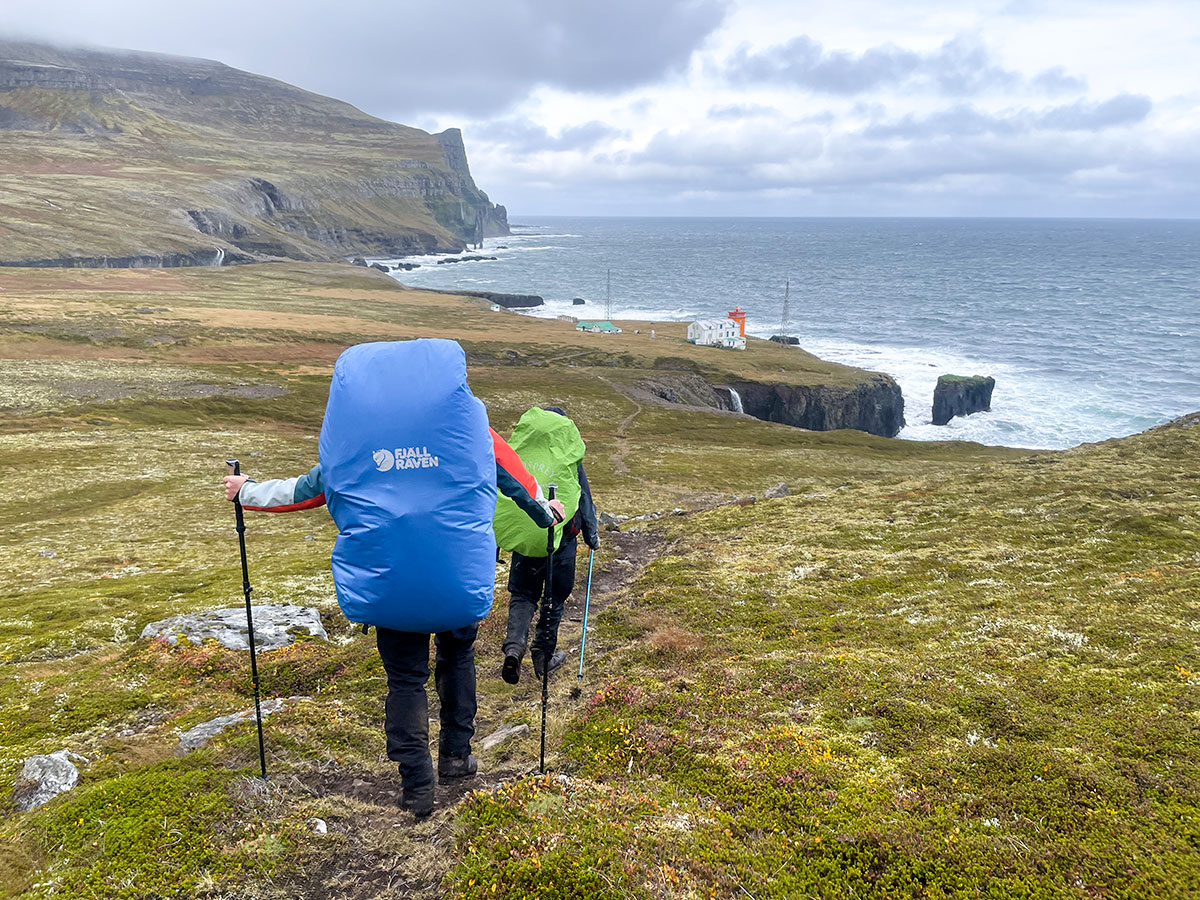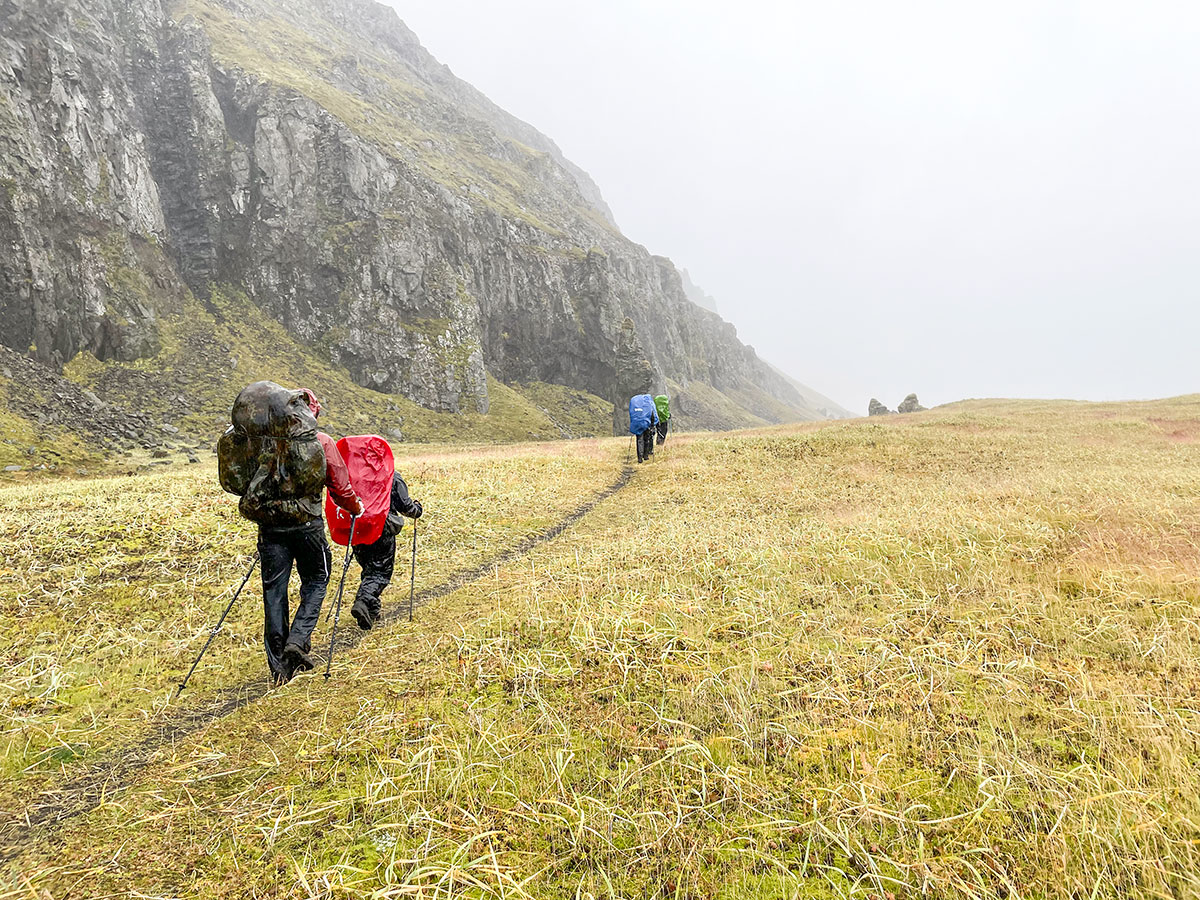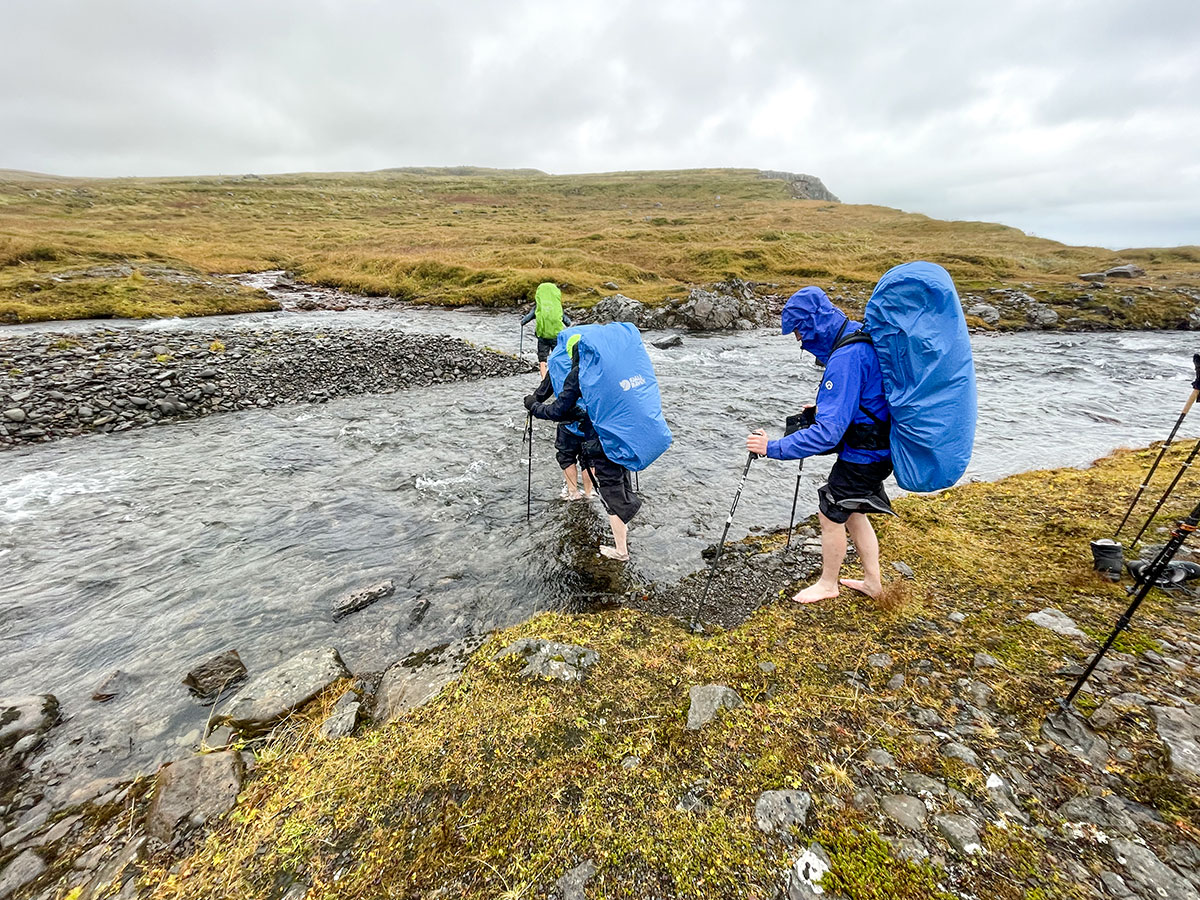Hiking with poles : essential equipment or a luxury?
On The fox diary, we regularly talk about hiking equipment, particularly hiking poles. But we haven’t yet touched on an important subject: Is there any point in hiking with poles?
I know from experience that many of you have never used walking poles on a hike or trek. This equipment has a reputation for being used by the rather elderly. However, in my opinion, they are essential, at least for multi-day hikes. In this article, I’ll tell you about my experience of walking poles, and the pros and cons of using this equipment, which is too often considered optional.
8 good reasons for hiking with poles
I started using walking poles when I was 30. So this advice is for EVERYONE. I’m not talking about use in a situation of age-related disability or incapacity, but about basic hiking equipment.
1. Hiking with poles saves energy
When you use walking poles, 25% of the effort is transferred from your legs to your arms. So you save the effort put into your thighs and calves by working your arms.
This transfer of effort may seem insignificant, but on a hiking trip lasting several days, the difference is crucial! After 10 days’ hiking with a 20kg backpack, it becomes very difficult to walk without hiking poles.
On shorter walks, the difference is less significant, but hiking with poles increases comfort and allows you to enjoy the scenery more, sweat less and be less out of breath.
2. Securing your steps
Sprained ankles are the most common injury when hiking. And the heavier the backpack, the more serious the injury.
When you walk without hiking poles, you have no way of limiting the damage in the event of a sprain. All your weight is transferred to the ankle without any brakes. With walking poles, you can limit the weight transferred and avoid injury altogether. I regularly put the poles in opposition to save my ankle, and it works!
What’s more, hiking with poles improves your balance and naturally reduces the risk of injury. You literally have 4 legs and you feel more stable.
3. Taking care of your joints
When you walk on uneven ground, with weight on your back, your joints suffer, particularly your knees and ankles. Hiking with poles allows you to transfer the weight to your arms, thereby sparing your leg joints.
The impact of walking without poles on the joints is very significant in the long term. If you want to hike for the rest of your life, remember to save your joints!
People who suffer from osteoarthritis will find some very good information in this article from the Versus Arthritis association.
4. Overcoming obstacles more easily with hiking poles
Hiking with poles can help you get over certain natural obstacles such as rivers, marshes and uneven terrain. I can give you an example of when walking poles are essential. During the hiking trips I guide in Iceland, we regularly have to cross rivers. Sometimes the current is so strong that it’s impossible to cross without poles. They help to stabilise and secure our progress and add the strength of our arms to that of our legs.
Walking poles will also make it easier for you to negotiate steep gradients, especially if you’re carrying a heavy load. When climbing, by leaning forward you transfer all the weight to your arms, making progress easier.
5. Improve your breathing
By walking with your arms outstretched, you open up your ribcage and naturally improve your breathing. Moving your arms backwards forces you to open up even more, which is a very good thing. You naturally adopt a position conducive to good breathing and you’re less out of breath.
If, at the end of your day’s walking, you’ve got aches and pains all over your body, it’s because the physical effort has been well distributed!
6. Walking faster with hiking poles
If you’re not used to hiking with poles, it will take some time before you get used to them and adopt them for good. But once you’ve got used to them, you’ll be able to walk much faster and with less energy. The stability and economy of effort will enable you to take advantage of your momentum to walk more smoothly, with less “break”. You’ll be able to cover more kilometres and finish your day in better condition.
7. Keeping your back straight when walking
What definitely convinced me to adopt hiking poles was the impact they had on my walking posture. As a tall man, I regularly suffered from lower back pain. I walked with my back bent, my ribcage closed and my shoulders forward. With the poles, I naturally stood up straight, with my shoulders further back. Since then, I’ve never had back pain when hiking.
8. Improvising a drying rack or other structures with walking poles
When hiking in the great outdoors, you may need walking poles for a variety of reasons. For example, it’s difficult to dry your clothes after sweating or washing them in a river. You can plant your poles on the ground and connect them with a cord to create a drying rack.
Hiking poles can have many uses, you just have to be creative and remember that you can do a lot with two poles: build a shelter against the wind, improvise a brace in case of injury, secure your tent in case of strong winds, etc.
The downside of hiking with poles
Obviously, everything is never black and white. And even though I’m a fervent advocate of walking poles, I do have to tell you about a few drawbacks that can cause discomfort for some people. But these drawbacks are minimal compared with the advantages of hiking with poles.
- Walking poles cause damage to hiking trails, so it’s a good idea to use rubber extensions, which are softer on the ground than metal spikes. In the mountains, certain paths can collapse as a result of being damaged by the spikes of walking poles.
- Risk of accident: while walking poles reduce the overall risk of falling, the opposite effect is possible in certain situations. For example, poles can get caught between two stones and cause you to fall. So avoid using them on terrain such as scree.
- Clutter: the problem with hiking poles is that your hands are constantly busy. Some simple actions, like taking a photo with your phone, require a bit more gymnastics.
- Learning how to use them: yes, you have to learn how to use walking poles! How do you adjust them? How do you synchronise your arms and legs? And so on.
- Extra weight in your luggage: more equipment means more weight, even if some models of hiking poles break all records for lightness.Does this article convince you that you’d like to try hiking with poles? Then take a look at our 8 tips to choose the best hiking poles. We talk about the types of walking poles on the market to help you make your choice.




